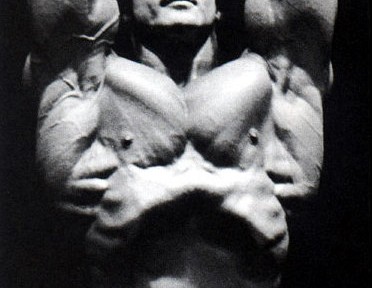100 repetition of the sentence - info
Bodybuilding has only a minor relation to numbers.
Even if the triple Mr. Olympia Frank Zane Was a math teacher, you will do well on studio arithmetic as long as you can count to 12 or 15 without using a calculator.
Calories as well as fat and protein grams can be calculated at home with a calculator.
100 WH set in the 60s, 70s and today
Repetitive training is not a new development.
In the 60s and 70s, top athletes were like Sergio Oliva und Serge Nubret Known for going well beyond 10 reps.
In the 80s, Diana Dennis and John De Fendis were among those who went up to 100 at times.
Tom Platz was another champion who went as far as he could to use his muscles to the full, even if that meant 100 reps - weighing in at 40 pounds - deep squats to further expand his legendary quadriceps.
Why are 100s sentences so unpopular?
The application of very many reps has remained a rare sight in most studios. There are four main reasons for this.
- Bodybuilders are creatures of habit.
Many find a program they are comfortable with and stick to it for years to see if it continues to be the one they want
Produces results or not. Using lots of reps is radically compared to sets of 10, and many athletes fear such a change.
– the weightsthat are used must be significantly lower than with a "normal" program.
– painful repetitions
- a lot of repetitions can stop gains or even reduce muscle mass
Few people start bodybuilding training to look like marathon runners.
The truth is that if you worked out on a program that consisted of only 100 sets of 100 repetitions for a year or more, you would likely lose muscle mass.
The first three excuses are easy to put aside. Variety (excuse one) and pain (excuse three) can lead to greater growth, and that is the most important thing regardless of how the repetitive workout may appear to others in the gym (excuse two).
However, the potential to lose muscle mass is another matter. This is a clear warning to bodybuilders.
The key is to use the 100 reps program only to a limited extent.

Effects of 100 WH program
 At the end of the 80s there was a hustle and bustle in relation to “hundreds” training: a system of just a few sets (three to five per body part) with 100 repetitions each.
At the end of the 80s there was a hustle and bustle in relation to “hundreds” training: a system of just a few sets (three to five per body part) with 100 repetitions each.
Most people don't build muscle using this method month after month, year after year.
However, when used for specified periods of time, such as three to six weeks twice a year, it can have three positive effects.
- there is often a growth spurt
A lot of repetitions are a unique strain on the most trained muscles.
- subjective advantage: Muscles show greater detail, which makes them look fuller and bigger.
High repetitions also allow you more time during a set to focus on contractions and build better mind-muscle connections.
- A 100 program can be a great way to "rest" light muscle and tendon injurieswithout actually resting. If the weights are light and the repetitions are over 50, the blood flow is increased and the muscles are better supplied with oxygen and nutrients.
100 program is not easy
Since endurance resistance training is completely new to most of you, it can take a few sessions to build the cardiovascular and muscular condition necessary to complete a 100 rep set.
How can I start with the 100 program?
Your first workout with this system should start with 1-30 repetitions per set per body part, then move to 50-60 repetition sets for the next unit.
Then, when you feel able, try 100 repetitions per set in subsequent workouts.
Choose a weight that is approximately 50% of normal weight. Then go to failure.
Maintain correct technique.
You should stretch carefully before starting, but the warm-up can often be minimized. When you reach exhaustion in a 100 set, pause a few seconds in the starting position to recharge your batteries to complete the set.

The dangers of the 100 program
Also note that there is little danger in starting such a program, but be careful when returning to your normal workout. It will take time for your body to get used to the heavier weights again. Warm up carefully and use caution as you work your way back up to your previous weights.

3 comments
Comments are closed.